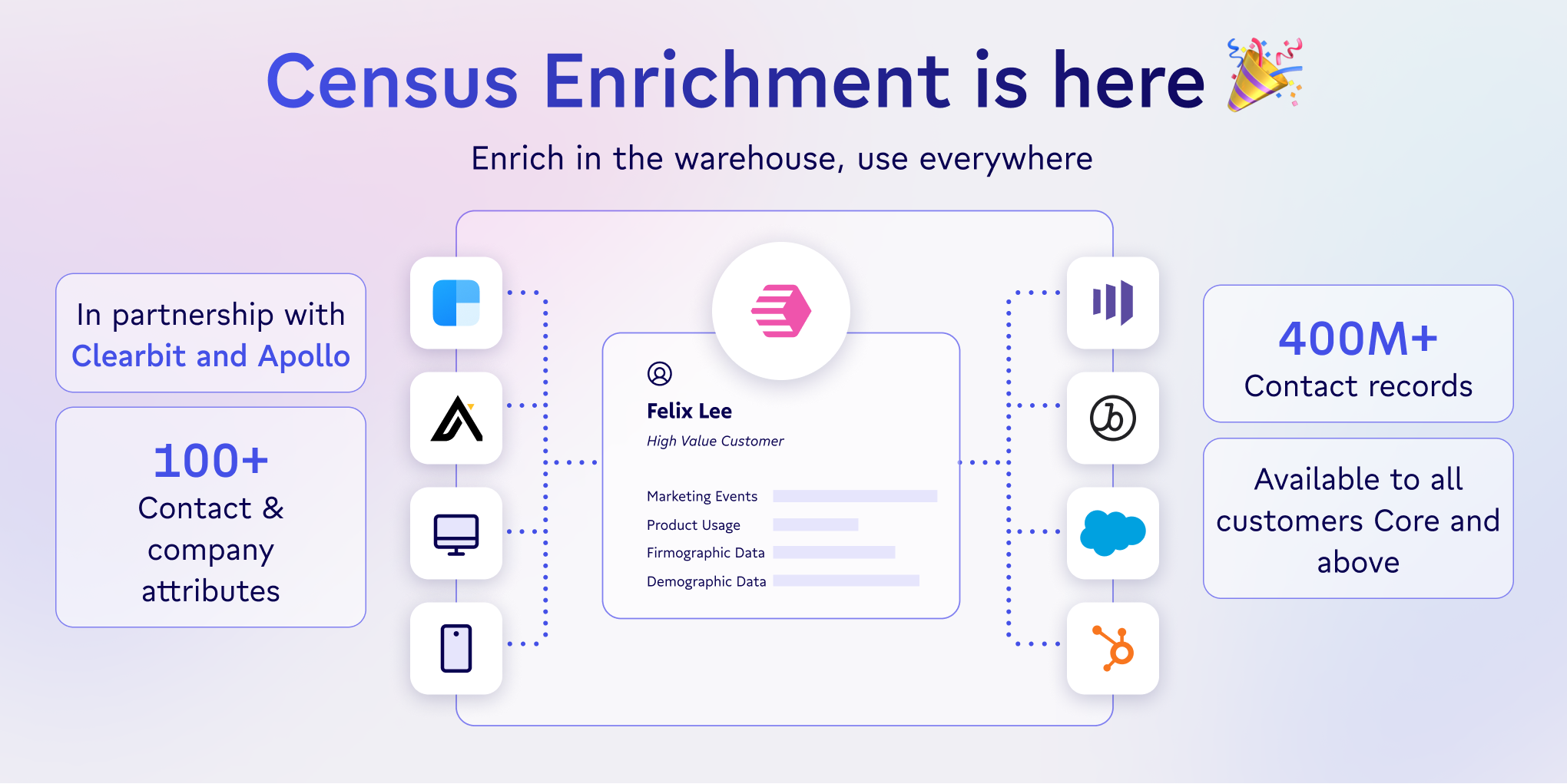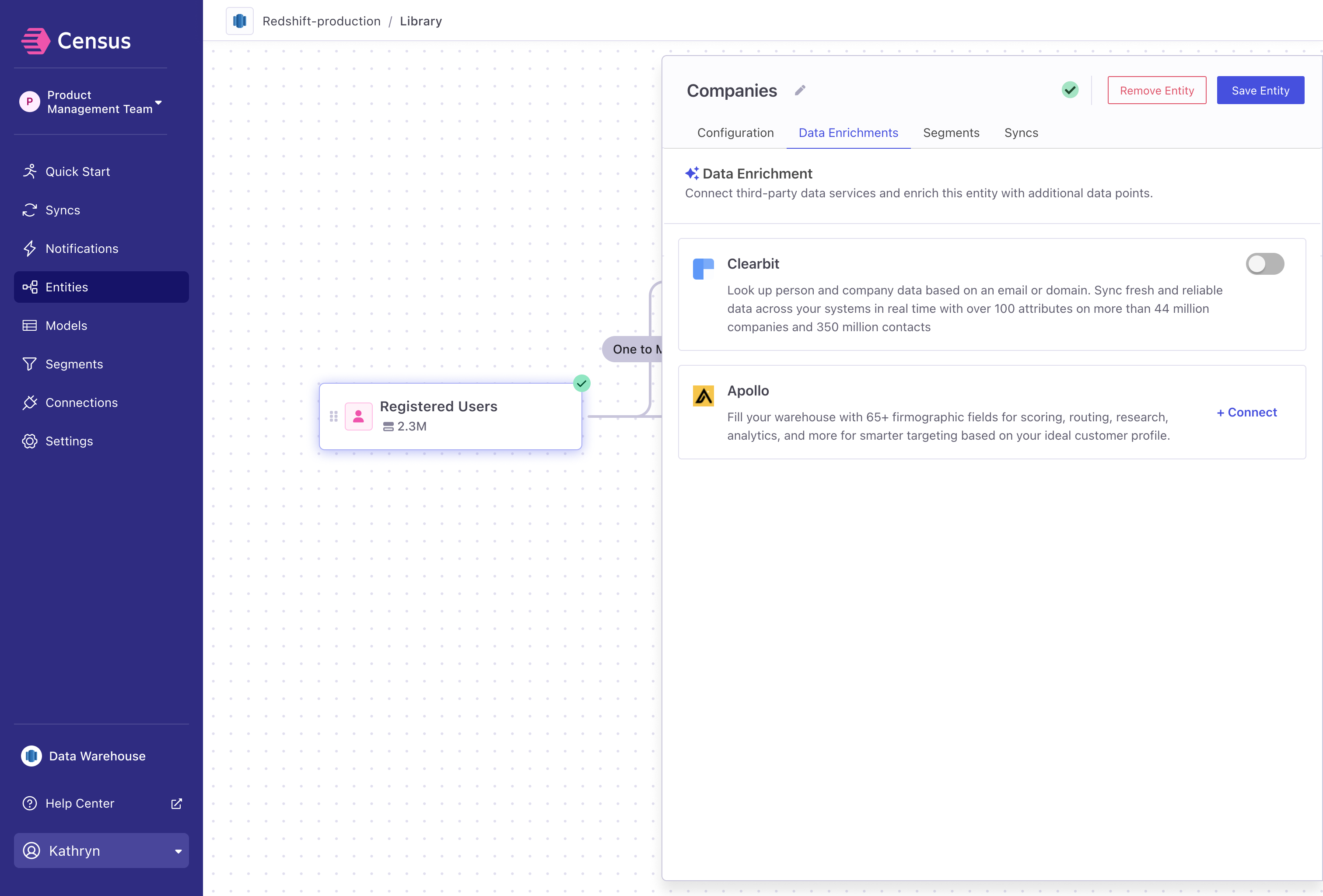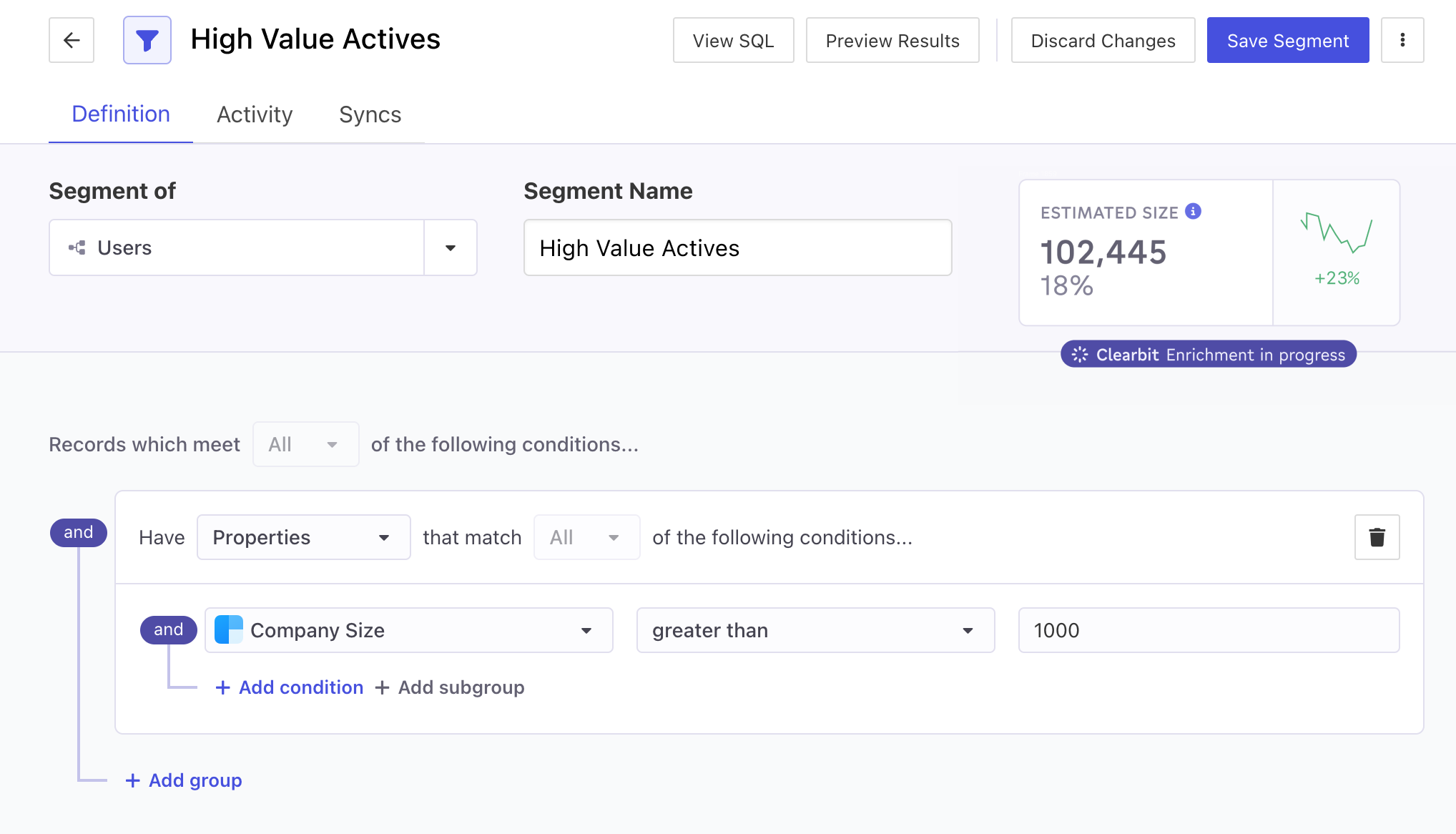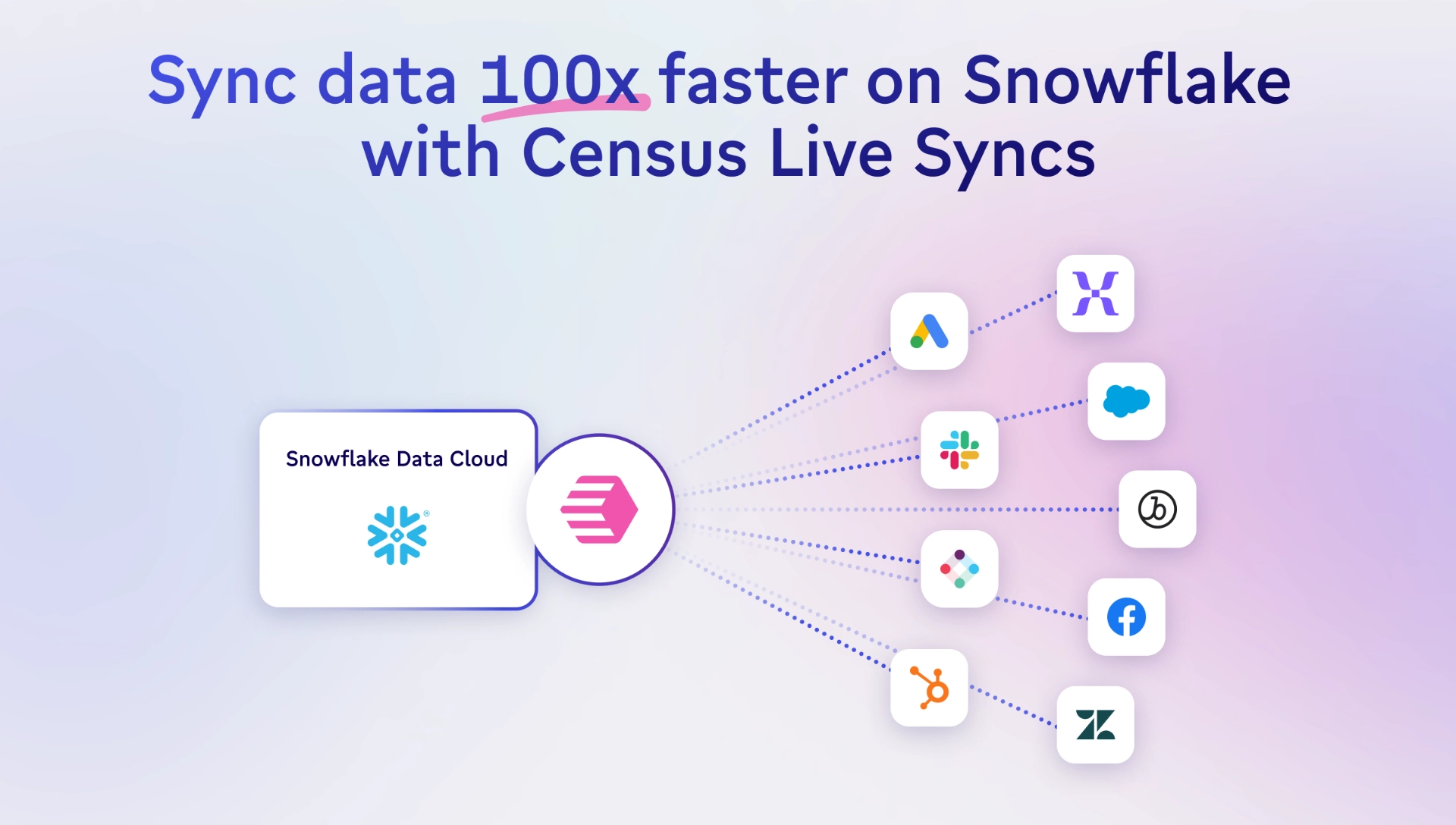TABLE OF CONTENTS
Census Enrichment: Third-party data enrichment, now in your warehouse | Census

Katy is a Product Marketing Manager at Census who loves diving into startups, SaaS technology, and modern data platforms. When she's not working, you can find her playing pickleball or Ultimate Frisbee.

Today we’re excited to announce Census Enrichment inside our data activation platform, with our launch partners Clearbit and Apollo.io. 🎉
We’re enabling marketers and data teams to build Customer 360 profiles that combine first- and third-party data in one source of truth – the data warehouse. Just enrich once and use everywhere.
The data enrichment challenge - where to enrich?
Marketers need to build complete Customer 360 profiles to target customers with the most personalized messaging. However, even a simple request like a list of “all users that work for companies with over 1000 employees” can be difficult to fulfill, because company size isn’t often data you already have, and not something customers would often provide.
That’s where data providers like Clearbit and Apollo fill in the blanks. They enrich your existing database with third-party data like employee count, job title, or company industry – as opposed to first-party data which is data that comes from you, your apps, and your customers.
The challenge has been – where do you do this enrichment across many fragmented systems?
Until today, it wasn’t easy to have that data available in the warehouse. Companies usually enrich Salesforce, Marketo, or HubSpot with third-party data through native integrations. Then they ETL ingest that data into the warehouse, to then stitch it back into the customer model. This fragmented integration flow results in increased costs and wasted credits (running enrich jobs in 2+ tools) as well as maintenance pains for custom scripts that hook up enrichment APIs.
⚡ TL;DR: Multiple GTM systems get enriched data in different ways, which makes the job of building complete Customer 360 profiles extremely complicated. Census Enrichment solves that problem by integrating enriched data into the warehouse.

Introducing Census Enrichment on your warehouse
With Census Enrichment, users can automatically add enrichment to Entities in their data warehouse from our partner enrichment services Clearbit and Apollo (with more to come soon) with just a few clicks.
Underneath the covers, Census takes care of building the corresponding enrichment data set in your data warehouse. This data is stored separately from your own first party data but can be referenced by any of your services. Census transparently takes care of joining that data with your first party data as necessary to power Census Segments and Syncs.
Like every Census product, Enrichment is built to be a natural addition to your data warehouse and to work at scale. The enrichment data is stored on your infrastructure and used to avoid making duplicate enrichment calls. You can also control how frequently data is refreshed, if at all.
For more information, read the product docs →
The benefits of enriching in the warehouse
Enriching the Customer 360 in the warehouse with Clearbit or Apollo makes your data even more comprehensive and actionable. By combining both first- and third-party data, you can build a more complete picture of your customers and prospects.
Because Census is the activation layer between your warehouse and SaaS apps, we already provide you with the tools to put that data to work.
Now, you can immediately use this unified customer data to:
- Sync to automation tools like Marketo, Braze, and Iterable using Reverse ETL.
- Segment customer lists based on third-party data attributes like company size.
- Power any BI tool, ETL process, or SQL integration connected to the warehouse.
Unify and activate all your customer data – whether it’s first-party or third-party – in your warehouse.

The benefits of combining first-party and third-party data in your warehouse with Census Enrichment:
- Better Personalization: Third-party data sources can help fill in the gaps and improve the accuracy of first-party data. A more complete and accurate Customer 360 enables marketers to deliver more personalized experiences and messaging, leading to higher customer engagement and satisfaction.
- Simplified Enrichment Workflow: Instead of enriching contacts and companies in multiple places then stitching data together, just enrich once and use it everywhere. No more wasted credits or duplicate enrichments. Maintain the enriched Customer 360 in the warehouse and sync it to all your marketing tools with Data Activation.
- Enhanced Insights: Combining first-party data with third-party data increases your customer understanding and helps you uncover new insights and patterns that may not be visible from a single data source. With deep understanding of individual customers, as well as wider context about those users and companies, you can make more informed decisions for sales, marketing, and product development.
Watch this video walkthrough for a step-by-step demo 👉
Get started today
Overall, combining first-party and third-party data provides more comprehensive and accurate Customer 360 profiles. Marketers can then activate those profiles across all their marketing and advertising tools with ease.
With Census, that’s just a couple of clicks away. Start a free trial or get a demo today 🙌




